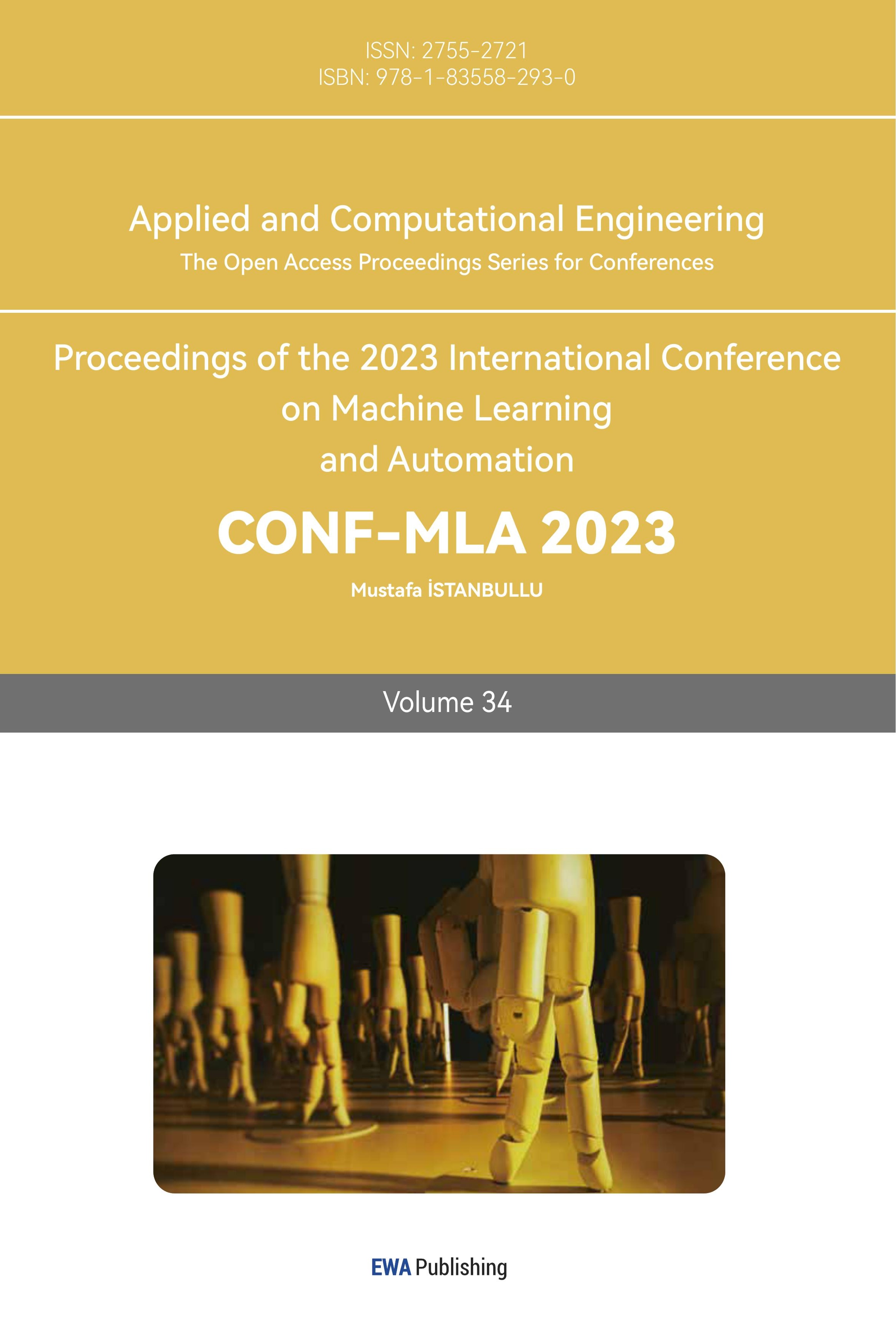References
[1]. Aranjo, S., Kadam, A., Sharma, A., & Antappan, A. (2021, May). Lie Detection Using Facial Analysis, Electrodermal Activity, Pulse and Temperature. Lie Detection Using Facial Analysis Electrodermal Activity Pulse and Temperature. https://d1wqtxts1xzle7.cloudfront.net/78660179/JETIR2105529-libre.pdf?1642141274=&response-content-disposition=inline%3B+filename%3DLie_Detection_Using_Facial_Analysis_Elec.pdf&Expires=1691316620&Signature=Nuh3lKncCwaA0GLlMbmFS7d9wouuc9BZbNtzzPv70m1B5ahtYtxz26jDmrVxQsgIpX4Cjcy8yewbrA7wjj8kmX1~5PDzfd4lCVe91yV1jRo5oFlaSc-ZaeM5px0lWm2MMvfdo6sJPNTmcUhUV6FZDkVmbl-wmJiff41Kiiw7rbvmQiVeN8wp9WR72FpNwBuOUrytOt032KoTmItkAWnIyiwx3uOQXBBhVrcF780aKbNL2T2~GBOVCfKXxsPkUAU3qJPpT5HxMCQam8BK5K137QpIZnJunA28mnXYGx2cWOTOO-ARhRjey2dy7hADA2UkJdlIiWIvkVCbZ8P0CNVoSQ__&Key-Pair-Id=APKAJLOHF5GGSLRBV4ZA
[2]. Cutrow, R. J., Parks, A., Lucas, N., & Thomas, K. (1972). The objective use of multiple physiological indices in the detection of deception. Psychophysiology, 9(6), 578–588. https://doi.org/10.1111/j.1469-8986.1972.tb00767.x
[3]. Srivastava, N., & Dubey, S. (2018). Deception detection using artificial neural network and support vector machine. Biomedical Research, 29(10). https://doi.org/10.4066/biomedicalresearch.29-17-2882
[4]. Wang Zhiyu. (2010). Based on physiology parameters to design lie detector. 2010 International Conference on Computer Application and System Modeling (ICCASM 2010). https://doi.org/10.1109/iccasm.2010.5619088
[5]. J. Seals, S. R. Crowgey, and S.M. Sharpe, U.S. Patent Number 4958638, issued September 25, 1990.
[6]. J. Seals, S. R. Crowgey, and S.M. Sharpe, “An electromagnetic non-contact vital signs monitor,” SOUTHCON ’87 Conference Record, 1987.
[7]. Geisheimer, J., & Greneker, E. F. (n.d.). Remote detection of deception using Radar Vital Signs Monitor Technology. Proceedings IEEE 34th Annual 2000 International Carnahan Conference on Security Technology (Cat. No.00CH37083). https://doi.org/10.1109/ccst.2000.891183
[8]. Texas Instrument Radar Vital Signal Sign Demo CCS Project. Ti developer zone. (n.d.). https://dev.ti.com/tirex/explore/node?node=A__AC7VmB.KueN8tkYhmlMnnQ__com.ti.mmwave_industrial_toolbox__VLyFKFf__4.9.0
Cite this article
Liu,P. (2024). Verification of using radar vital sign monitors in deception tests (2023). Applied and Computational Engineering,34,122-131.
Data availability
The datasets used and/or analyzed during the current study will be available from the authors upon reasonable request.
Disclaimer/Publisher's Note
The statements, opinions and data contained in all publications are solely those of the individual author(s) and contributor(s) and not of EWA Publishing and/or the editor(s). EWA Publishing and/or the editor(s) disclaim responsibility for any injury to people or property resulting from any ideas, methods, instructions or products referred to in the content.
About volume
Volume title: Proceedings of the 2023 International Conference on Machine Learning and Automation
© 2024 by the author(s). Licensee EWA Publishing, Oxford, UK. This article is an open access article distributed under the terms and
conditions of the Creative Commons Attribution (CC BY) license. Authors who
publish this series agree to the following terms:
1. Authors retain copyright and grant the series right of first publication with the work simultaneously licensed under a Creative Commons
Attribution License that allows others to share the work with an acknowledgment of the work's authorship and initial publication in this
series.
2. Authors are able to enter into separate, additional contractual arrangements for the non-exclusive distribution of the series's published
version of the work (e.g., post it to an institutional repository or publish it in a book), with an acknowledgment of its initial
publication in this series.
3. Authors are permitted and encouraged to post their work online (e.g., in institutional repositories or on their website) prior to and
during the submission process, as it can lead to productive exchanges, as well as earlier and greater citation of published work (See
Open access policy for details).
References
[1]. Aranjo, S., Kadam, A., Sharma, A., & Antappan, A. (2021, May). Lie Detection Using Facial Analysis, Electrodermal Activity, Pulse and Temperature. Lie Detection Using Facial Analysis Electrodermal Activity Pulse and Temperature. https://d1wqtxts1xzle7.cloudfront.net/78660179/JETIR2105529-libre.pdf?1642141274=&response-content-disposition=inline%3B+filename%3DLie_Detection_Using_Facial_Analysis_Elec.pdf&Expires=1691316620&Signature=Nuh3lKncCwaA0GLlMbmFS7d9wouuc9BZbNtzzPv70m1B5ahtYtxz26jDmrVxQsgIpX4Cjcy8yewbrA7wjj8kmX1~5PDzfd4lCVe91yV1jRo5oFlaSc-ZaeM5px0lWm2MMvfdo6sJPNTmcUhUV6FZDkVmbl-wmJiff41Kiiw7rbvmQiVeN8wp9WR72FpNwBuOUrytOt032KoTmItkAWnIyiwx3uOQXBBhVrcF780aKbNL2T2~GBOVCfKXxsPkUAU3qJPpT5HxMCQam8BK5K137QpIZnJunA28mnXYGx2cWOTOO-ARhRjey2dy7hADA2UkJdlIiWIvkVCbZ8P0CNVoSQ__&Key-Pair-Id=APKAJLOHF5GGSLRBV4ZA
[2]. Cutrow, R. J., Parks, A., Lucas, N., & Thomas, K. (1972). The objective use of multiple physiological indices in the detection of deception. Psychophysiology, 9(6), 578–588. https://doi.org/10.1111/j.1469-8986.1972.tb00767.x
[3]. Srivastava, N., & Dubey, S. (2018). Deception detection using artificial neural network and support vector machine. Biomedical Research, 29(10). https://doi.org/10.4066/biomedicalresearch.29-17-2882
[4]. Wang Zhiyu. (2010). Based on physiology parameters to design lie detector. 2010 International Conference on Computer Application and System Modeling (ICCASM 2010). https://doi.org/10.1109/iccasm.2010.5619088
[5]. J. Seals, S. R. Crowgey, and S.M. Sharpe, U.S. Patent Number 4958638, issued September 25, 1990.
[6]. J. Seals, S. R. Crowgey, and S.M. Sharpe, “An electromagnetic non-contact vital signs monitor,” SOUTHCON ’87 Conference Record, 1987.
[7]. Geisheimer, J., & Greneker, E. F. (n.d.). Remote detection of deception using Radar Vital Signs Monitor Technology. Proceedings IEEE 34th Annual 2000 International Carnahan Conference on Security Technology (Cat. No.00CH37083). https://doi.org/10.1109/ccst.2000.891183
[8]. Texas Instrument Radar Vital Signal Sign Demo CCS Project. Ti developer zone. (n.d.). https://dev.ti.com/tirex/explore/node?node=A__AC7VmB.KueN8tkYhmlMnnQ__com.ti.mmwave_industrial_toolbox__VLyFKFf__4.9.0









